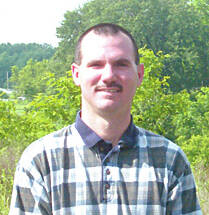
If you’ve been wondering what’s been spinning those webs into the trees along Ohio’s roadways—fall webworms are the culprit. While fall webworms can strip the leaves from trees and nests can look unsightly and concerning, the Ohio Department of Natural Resources Division of Forestry says this native insect typically has little or no impact on overall tree health.
I have personally made a few trips over towards Howard, Danville, and the Mohican areas the last few weeks and was astonished at the number of trees that are currently covered in nests. I passed one stretch near Danville in the evening and it looked like the entire valley of trees was full of them.
ODNR Division of Forestry, Forest Health Program Manager Tom Macy says that fall webworm nests usually become apparent in late summer and early fall and they feed on more than 400 species of trees and shrubs, but are frequently found on black walnut, black cherry, and hickories. Though they commonly defoliate one or a few branches and can occasionally have outbreaks that result in the defoliation of entire trees, they do not directly cause tree death.
The caterpillars do most of their feeding late in the growing season when trees have already had a lot of time to grow and store nutrients to produce leaves the following year.
Fall webworms spend the winter as pupae in cocoons in leaf litter or soil. Adult moths typically emerge in late spring when they mate and begin laying eggs. The larvae (caterpillars) hatch from the eggs and begin to spin small silken webs over the foliage on which they feed. Larvae mature, pupate, and emerge as adults by late summer, when they mate and lay eggs, giving rise to the second generation.
The eggs are often laid on or near the nests from which they developed. The second-generation caterpillars expand the nests constructed by the first-generation caterpillars. These silk nests commonly envelope 2-3 feet of a branch and its leaves but can be larger. Larvae mature in about six weeks, leave the nest, and pupate on or in the soil. Caterpillars can be up to an inch and a half in length and are generally pale yellow to gray in color with small dark spots and light-colored hairs. Adult moths are generally white with a wingspan of about an inch and a half. The silk nests may remain on trees into the winter.
The nests of fall webworms are often incorrectly attributed to tent caterpillars, bagworms, or spongy moths. Tent caterpillars are active in the spring and create silk shelters on tree trunks or in the pockets of tree branches. Bagworms protect individual caterpillars by creating a protective case made of plant material, which may resemble a small pinecone. Spongy moths are active in the spring and do not create conspicuous silk nests. The communal nests of fall webworm caterpillars occur at the ends of branches in late summer and early fall.
Control measures for fall webworms are rarely warranted. There are many natural predators of fall webworm caterpillars including birds, mammals, insects like wasps, and even viral and fungal diseases. On small trees or shrubs, nests can be pruned out of the tree and stomped on or crushed by hand. Measures such as spraying with pesticides, or the use of fire are not recommended.
So if you see these guys on your trees, although they are an eyesore, the good news is that they aren’t going to cause any permanent damage.
• As we ushered in autumn this past Saturday, an array of fall colors is now beginning to dot the tree canopies around the Buckeye State. As temperatures continue to moderate and with rain in the forecast, the fall color transformation should soon begin in earnest statewide according to the ODNR.
On the search for unique and beautiful locations to find fall colors in Ohio? The Buckeye State is home to over 140 state nature preserves that contain remnants of Ohio’s pre-settlement past, rare and endangered species, and wondrous geologic features. Dogs are not permitted in nature preserves because of the fragile flora and fauna and you need to stay on trails at all times.
Those interested in finding the most eye-catching leaves throughout the season should check out ODNR’s fall color website, https://ohiodnr.gov/go-and-do/see-the-sights/fall-color, the official guide to the changing colors.
• The perch bite up at Lake Erie has slowed considerably as they changed their diet to focus more on hatching sand fleas and the walleye are still a considerable distance to the northern and eastern parts of the lake where it is deeper. As the water temperature continues to drop with the cooler nights, expect the bite to pick up as the walleye start migrating back and begin putting on the big feed in preparation for winter.
Until next time, Good Hunting and Good Fishing!
Ken Parrott is an Agricultural Science teacher with Northmor High School.

